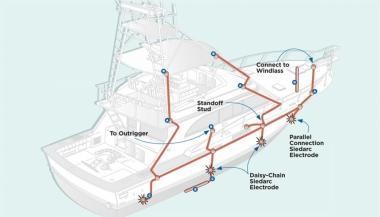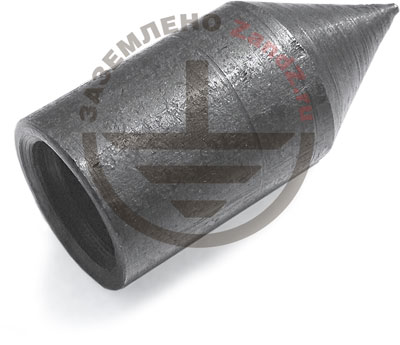Installation of grounding on a ship is a prerequisite for ensuring safety of people from the harmful effects of electric current and electromagnetic field. As we know, protective grounding is a structure of non-conductivng metal parts of the electric plant with the ground, or, in our case, its equivalent - metal base of the vessel. Let's find out how grounding on a sea-craft is arranged.
Grounding scheme for a marine vessel is much more complicated than, for example, for a single-family house. Grounding on ships is divided into two types: defensive and high frequency. Let's study each of them in detail.
Protective grounding
The main task of the protective grounding on a ship is to ensure safe deck occupancy of people, due to the reduction of voltage values which can affect a person. Bodies of electrical equipment, transformers, circuit breaker covers and other electrical equipment with the voltages above 42 V AC and 110 V DC should be grounded. That means, this is all the equipment which is under voltage and is able to harm during leakage or breakdown of insulation.
If the hull of a ship is made of wood, then a sheet or a tape with the cross- section not less than 0.5 m2 is used for grounding circuit. They are mounting from the outside of the vessel, under water. If the vessel has a metal shell, grounding is performed on the hull of the ship by means of a copper tape or strip with the cross-section of not less than 16 mm2.

Grounding circuit on a sea-craft
High frequency grounding
High frequency grounding is set for devices and radio transmitters. The main objective of this grounding is to ensure the smooth operation of navigation devices and prevent their failure.
If grounding is performed for devices, antenna switching units or switches, then the bolt, welded to the ship hull, located near the ground electrode, is used. If you need to ground the transmitters, then special copper bars with the cross section of at least 25 mm2 or 50 mm2 for transmitters of 50W or from 50 to 500 watts, respectively are used.
Grounding is not applicable for installations with the voltage below 25 V. If the electrical installation is securely connected to the foundation of the vessel, the grounding device is also not installed. Engine, mast and other metal objects for DC circuits cannot be used as ground electrodes. Also, on ships with non-metallic hulls, according to the normative document "Regulations of electrical safety at power supply of the navy ships under repair and construction" LPR PO 152-31.83.03-97 it is prohibited to combine protective and working grounding with the grounding of lightning protection device.
Related Articles:











